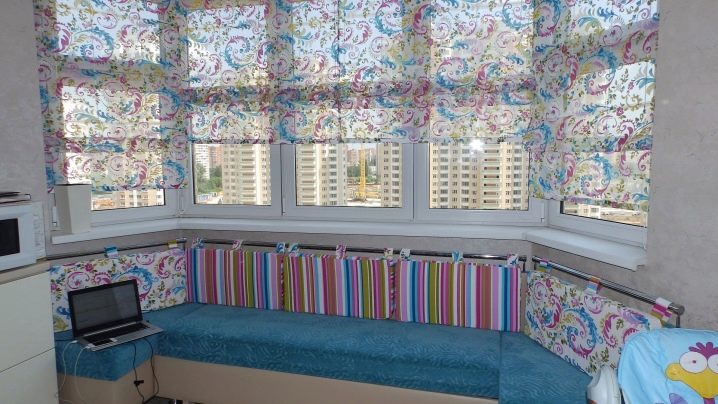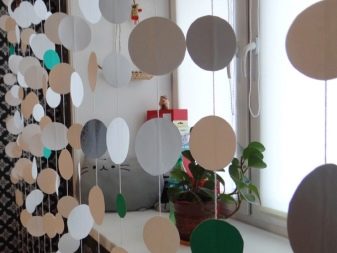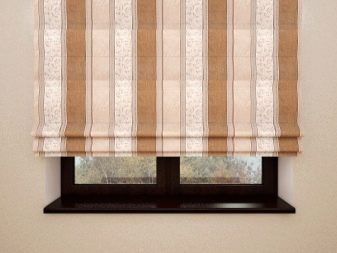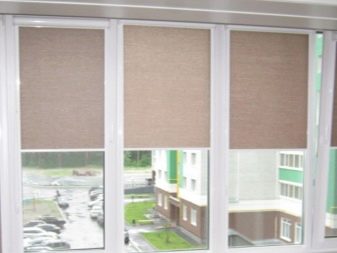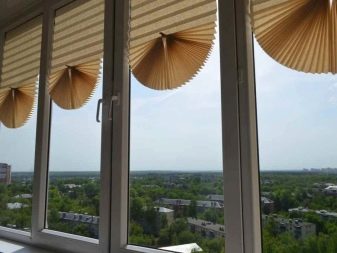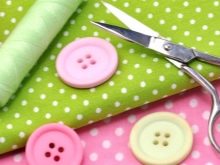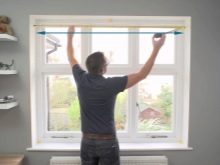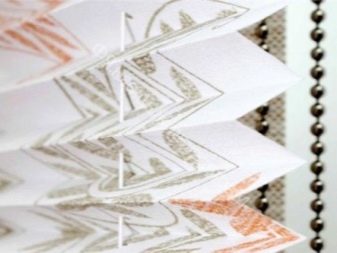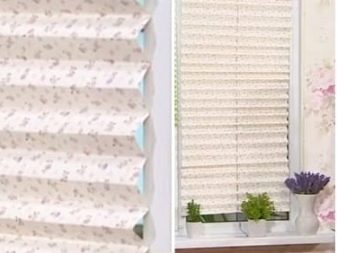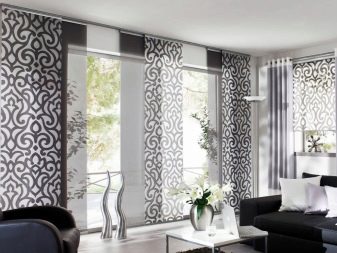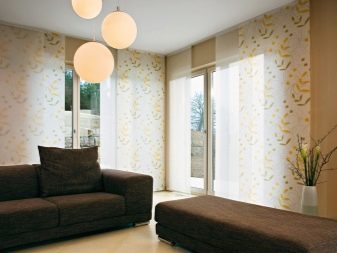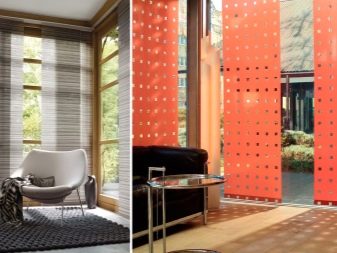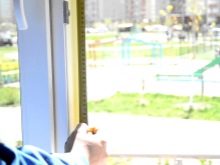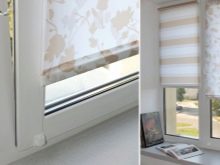How to make curtains from wallpaper?
In our time, practical, original, exclusive things made by hand, are of greater interest than expensive items of mass industrial production. Decorating your home provides tremendous opportunities for the realization of the most unusual fantasies, but quite often there is not enough material means for this. Unconventional use of wallpaper as curtains will help solve the problem of decorating windows.
Kinds
Wall-paper can become a basis for creation of curtains from circles, and also the Roman, rolled curtains or blinds.
- Curtains from circles have rather decorative purpose, than functional. They give the room a festive and airy look. They are good for Oriental style interior, for use in children's areas.
- Roman curtains ideal for antique, classic, country and modern styles.
- Roller blinds more stringent, they fit absolutely any style.
Do it yourself
From circles
To make paper curtains on the windows, you will need paraffin, cardboard, glue, punch or scissors, thread, twine, a small pan (bowl) and a paint brush.
- Cut out the cardboard and measure the pieces of wallpaper of the same size. We apply paraffin wax on cardboard sheets with a brush, and until it is frozen, glue the wallpaper to the cardboard. For a more even and reliable fastening of the workpiece should be ironed iron. It is desirable to do this through the fabric. Then we do the same on the back side of the cardboard: we put paraffin, glue the wallpaper, smooth it.
- From the prepared material cut circles of arbitrary sizes (from 2 cm in diameter). This can be done with scissors or punch, designed for large holes. The resulting circles are strung on a thread of curtains of the desired length. Mugs are evenly distributed over the entire length and fixed with glue. We attach the threads with circles to the common base-eaves.
- In combination with the wallpaper, you can use colored paper. Contrasting or, on the contrary, coinciding in tone.
Roman
Best suited for this dense vinyl wallpaper.
- In addition to wallpaper, you will need scissors, ruler, glue, tape, decorative cord, awl, buttons or decorative stops.
- We measure the window, to the desired length of future curtains add another quarter of the length (it will disappear in the folds).
- The sheets of wallpaper should be folded into an accordion (not less than 3-4 cm), using pencil markings and making bends using a ruler. Ugly folds spoil the look of the product.
- The first folds to give strength is recommended to glue.
- In the folds in the center of the cloth we make neat equidistant holes through which the cord will pass. So that they do not lose shape, we strengthen them with scotch tape.
- Through the holes we make a decorative cord, tying it into a knot from the top, from the bottom the stopper can be a regular button or some decorative thing. The cord is drawn to the outside and fixed, so that they can easily adjust the height.
- These curtains are fixed on the frame with double-sided tape.
- The lower part of the cloth is bent in half, and one part is counter-bonded to the other, like a flared peacock tail.
Curtains panels
Instructions for making:
- we take wooden bars with a section of 3x3 cm and a length equal to the dimensions of the window, fasten them with the help of corners and screws;
- cut out plain paper or vinyl wallpaper flat tape, adding to the length of the frame by 4 cm;
- in the upper part of the panel, we tighten the screws, leaving them unfinished by 5-10 mm;
- we fasten the cornice on the ceiling; we make holes in it corresponding to the size of the caps of the screws;
- securing the screws in the holes, slightly push the panel aside.
Rolshtora
The advantage of the rolshtor is to fit snugly to the window, ensuring maximum shading of the room.
In the manufacture of such curtains wallpaper does not fold into an accordion, they are simply rolled up into a tight roll. There is no need to make holes for fixing cords.
- Production begins with the sizing of the window. At the same time, the desired length is multiplied by 2 and ¼ length is added to it for future pockets: the wallpaper will be doubled and will get a density and a two-sided attractive look.
- Folded in half wallpaper glued together with glue or double-sided tape. At the ends of the wallpaper folded in the form of pockets. For this it is better to use a stapler.
- In the resulting pockets stacked weighting - thin wooden or plastic slats. The tape is fixed on the hidden side of the upper pocket and goes down on both sides.
- We fix the received blinders in the upper part of the frame, if necessary, open the window, turn the curtain with a roll and pick it up on both sides with the tape going down.
If you want to make your home unique, such curtains are the most affordable option for housing transformation. Very little time will be spent on their production. It is possible to attract children to such creative work and to create unique exclusive products together with them.
It should be noted that the folds of paper wallpaper remain even when the curtains are deflated: any pattern appears refracted. Therefore, you should not use wallpaper with images of people, animals, fabulous creatures. For this better fit geometric patterns, marine themes, floral prints.
Curtains of wallpaper - the original decoration of the windows, they can be used not only in residential premises, but also on the glazed balconies and balconies. Due to the high humidity and fumes, paper curtains are not recommended for use in the kitchen. The cheapness of the product allows you to change such curtains without any problems, depending on the changing interior of the home, time of year or even mood. Solar curtains will add brightness of sensations, and restrained tones will calm.
Such a cheap and at the same time original decoration of windows is easily changed, it allows you to show inspiration and realize in practice the most unexpected fantasies.
Detailed instructions for creating blinds from wallpaper - in the video below.

